I Biked the Most Dangerous Road in the World
A version of this article originally appeared on VICE en Español.
The road that connects La Paz with Los Yungas, the Bolivian rainforest, is home to one of the most dangerous passages known to man: el Camino de la Muerte, or “the Road of Death.” With unprotected cliffs more than 2,624 feet high, narrow unpaved roads, and a descent over two miles long, it’s claimed a slew of lives: up until the construction of a new road in 2006, an average of 200 people died there annually.
I’m Miguel Ángel Vicente de Vera, a travel journalist and adventurer from Spain. Just thinking about biking on the most dangerous road in the world sent adrenaline coursing through my body, and on my last solo trek through South America, I knew it was a mandatory stop on my way through Bolivia. What follows is a timestamped log of my ride down the camino—a race against death marked by punctured tires, disgruntled locals, and dizzying precipices.
***
8:00 AM
A truck picks me up at the hotel. Inside are four other people who are still drowsy; we greet one another discreetly. We drive to a small mechanic’s shop where they give us bicycles, we test the gear, and we stock up on provisions. Our group consists of myself, two Argentinians named Fernando and Rafael, a Canadian girl named Shirley, and a Brazilian couple. The drive from the Bolivian capital of La Paz to La Cumbre—our starting point at 15,256 feet above sea level—will take us an hour and a half.
9:30 AM
A cold and sharp landscape dominated by glacial, grayish colors welcome us. We adjust our clothes and gear while laughing, joking, and trying to hide how nervous we are about the challenge ahead. Accompanying us are three guides from the El Solario tourist agency: René Huanca and Mario Tapia on bikes and a third person in the support vehicle. They give us an initial orientation about safety, Bolivian traffic rules, and remind us that this isn’t a race. But with the presence of international cyclists and a clear goal to reach, the competitive instinct will be totally impossible to avoid.
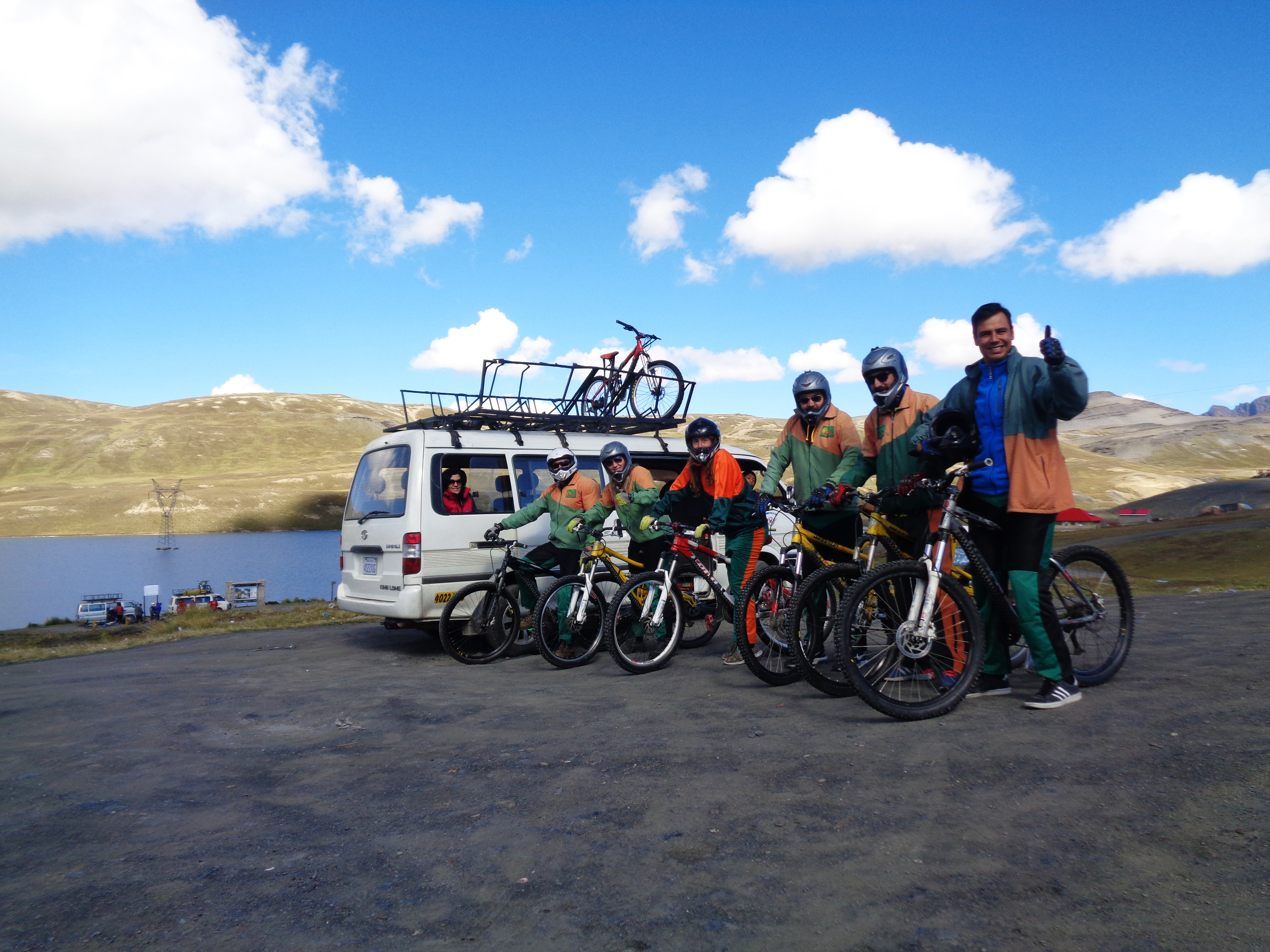
All of us are wearing several layers of clothing that we’ll shed as the descent progresses. It’s a total of 11,483 feet. Just before we leave, the two guides make the sign of the cross. It’s at that exact moment, right at the beginning of the descent, that you realize that things are serious. The first leg of the journey is on a modern and busy paved road, and lasts just over an hour. As we come around the first curves, crosses appear, marking the fateful place where two people died. The image will come up multiple times throughout the journey, transforming the route into an unexpected cemetery.
Immediately, two groups are formed; at the head are Fernando and Rafael, followed by yours truly; a few meters behind are Shirley and the Brazilian couple. We’re going pretty fast, even taking over another group that started out 30 minutes earlier than we did. I fly down the road at a speed above my desired level of control, but I don’t want to be left behind.
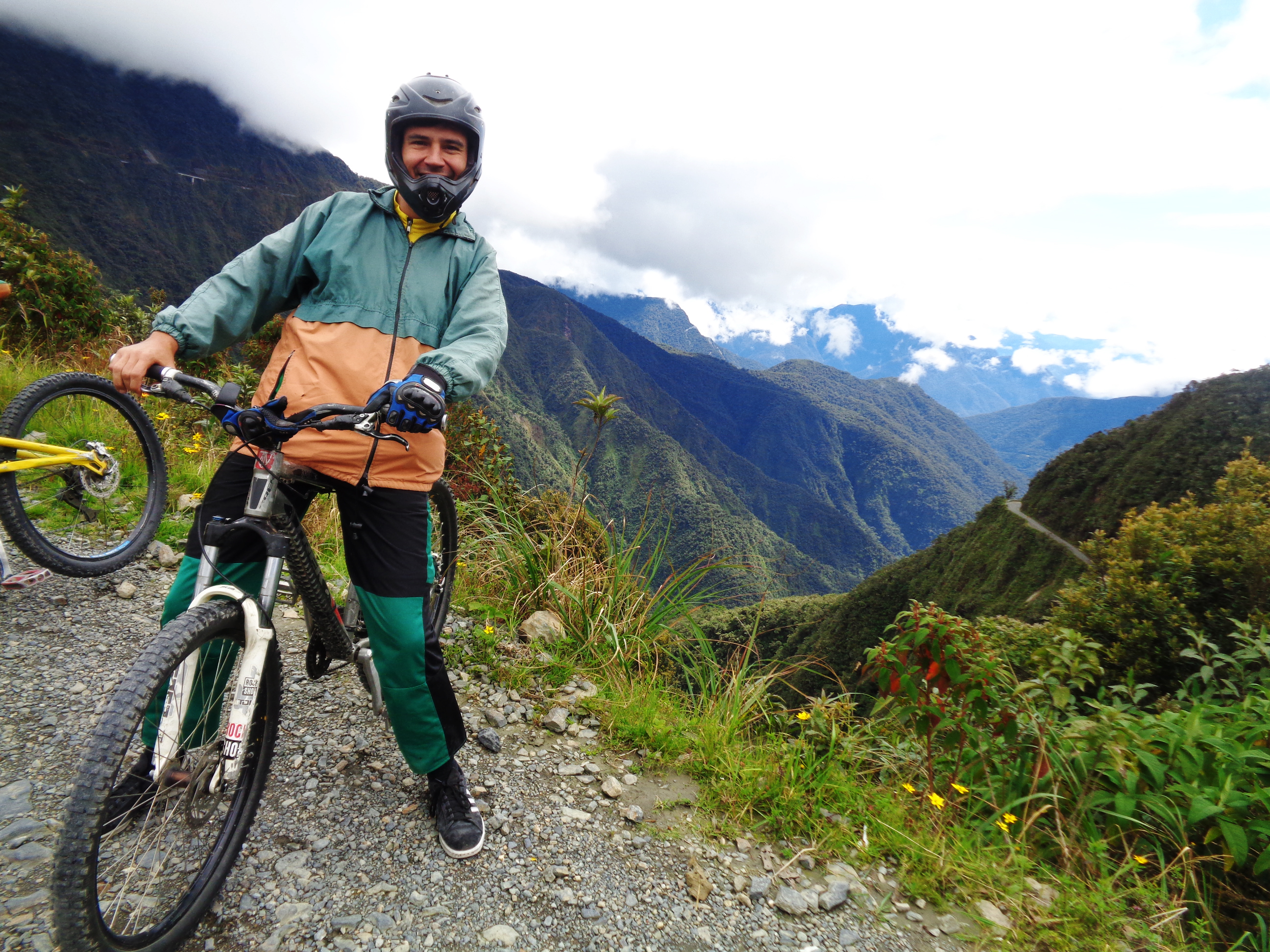
10:30 AM
After this first leg, we arrive in the rural town of Unduavi and stop for a small snack. The rocky Andean landscape is transformed into a tropical one with abundant vegetation. A poster reminiscent of the Far West announces the beginning of the Camino de la Muerte, the “Route of Death.” An eerily silent landscape opens up in front of us: a succession of vast gorges lined with jungle vegetation and a fine, ochre-toned highway that bends and winds until it vanishes into the horizon.
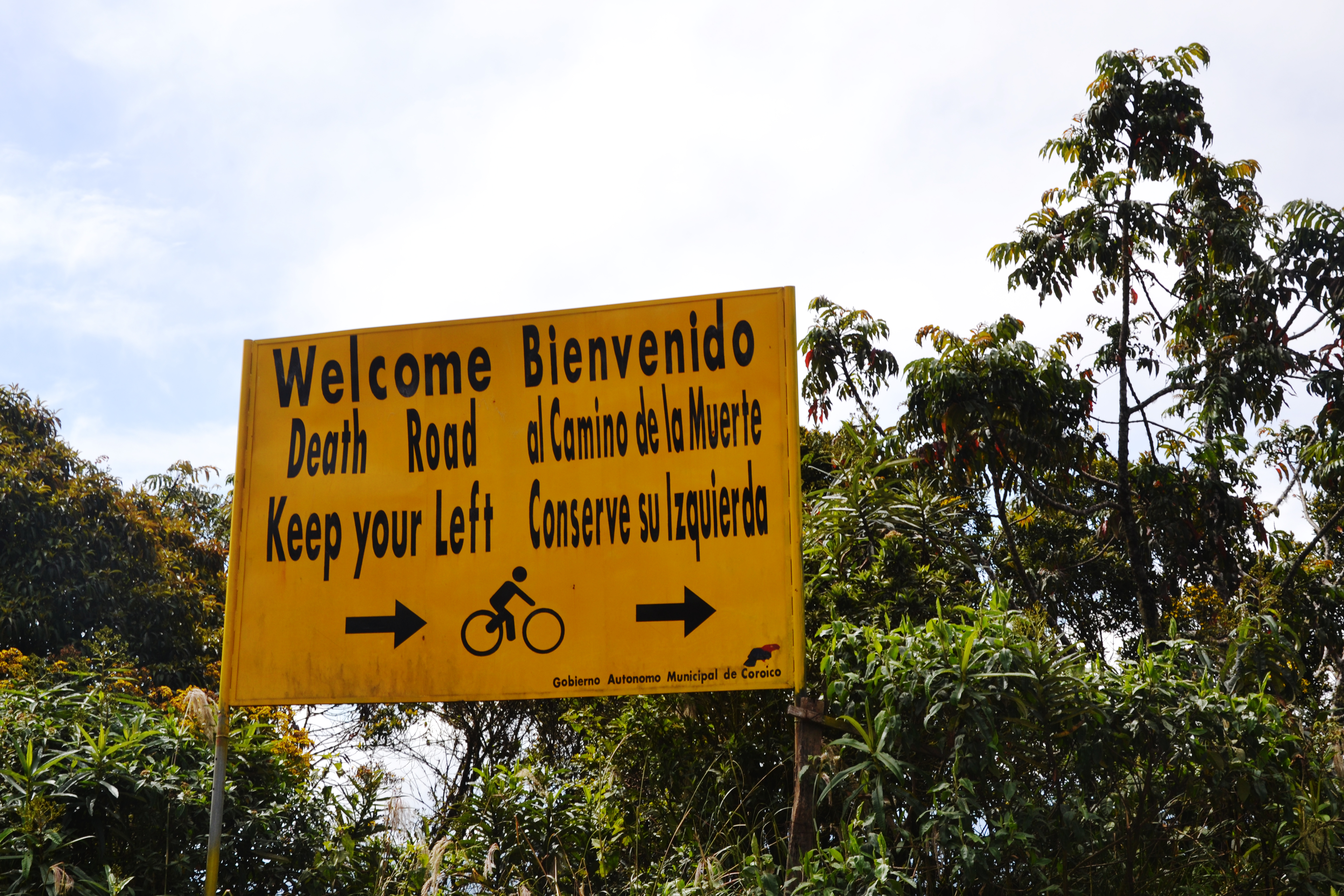
We put our helmets and gloves back on. We’re at an altitude of 11,811 feet. This road, nearly 40 miles long, is nothing like the one that preceded it: it’s not paved, it doesn’t have any guardrails to protect us from the abyss below (which is up to 2,625 feet deep), it’s very narrow (with sections that are only about 13 feet across), it’s full of pebbles, and has numerous sections flooded with water from nearby streams. In the winter, it rains and snows frequently here. On top of all this, the only way is to travel on the left, like the English do. This allows passing cars on the two-lane road to have greater visibility of the precipices.
No one in our group is laughing or making jokes anymore. At this moment, I wonder if it’s really a good idea to ride a bike on one of the roads with the highest record of death in the world. My subconscious plays a trick on me and I mutter a prayer that, due to my atheism, I retract immediately.
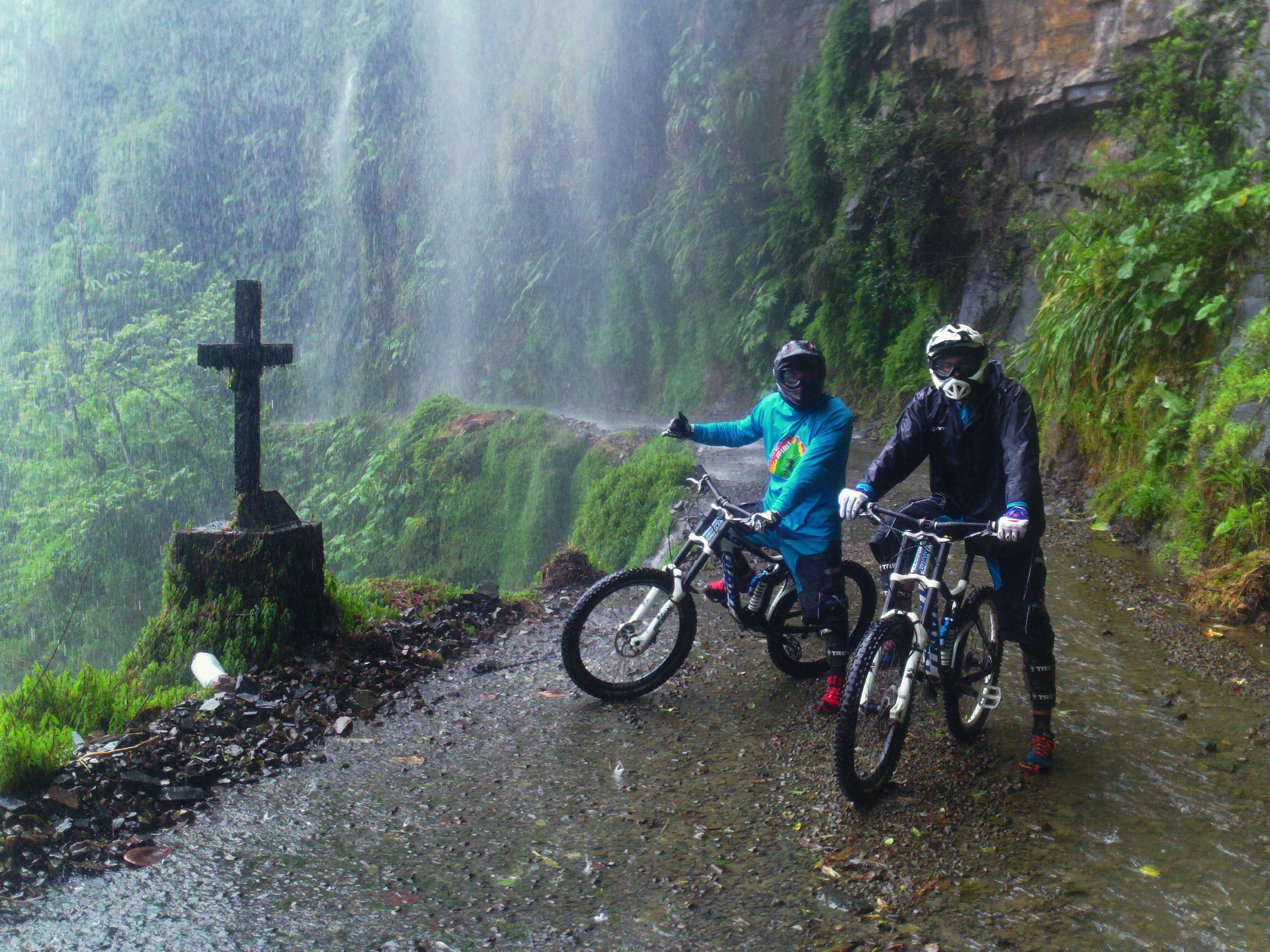
Before leaving, our guides give us new instructions. “This is the golden rule: the bicycle will go where your eyes go, so please don’t look at the landscape. I know it’s difficult, but it’s very important that you just look at your path and concentrate. This isn’t a game.” As they explain this, I think about the myth of Orpheus, who had only one condition to get out of hell: he should never turn back. Of course, he looked.
René explains that since the majority of people who come to the route are foreigners, Bolivians don’t like this place. There are too many deaths and too many tears spilled here.
“As we come around the first curves, crosses appear, marking the fateful place where two people died. This image will come up multiple times throughout the journey, transforming the route into an unexpected cemetery.”
This road seems to have been cursed by Cain from the very beginning. It was built by Paraguayan prisoners during the Chaco War, a conflict fought between Bolivia and Paraguay for control of the Chaco Boreal region in the 1930s. Since then, there hasn’t been a year in which no deaths occurred. The most devastating incident happened on July 24, 1983, when a bus plunged into a canyon, killing more than 100 passengers in the worst road accident in Bolivian history. Official figures hovered around an average of 200 deaths per year until 2006, when the new highway was inaugurated. Nobody knows exactly how many people have died here, but the total is estimated to be in the thousands. This sad reality led the Inter-American Development Bank to declare it the most dangerous road in the world in 1995.
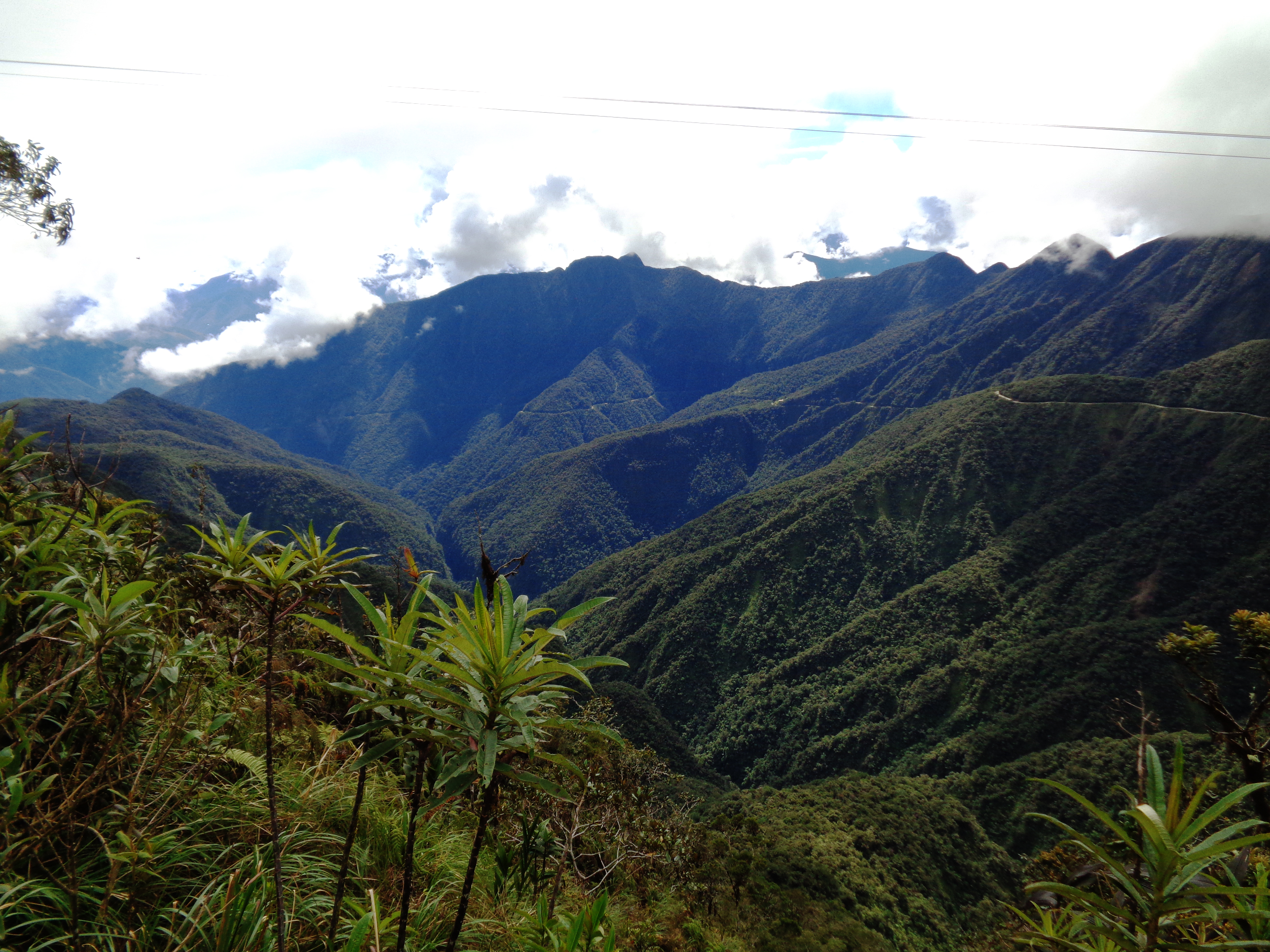
11:00 AM
We hug one another and take the obligatory group photo. The true adventure begins now. You can feel the vertigo in every turn of the pedals. I’ve spent my whole life cycling, but this time I have a hard time taming the bike. There’s lots of stones on the road that cause the bike tremble continuously, even though it has front suspension and latest model disc brakes. I have to apply considerable pressure on the handlebars to stay the course. After a few minutes, the first waterfall appears; not very large, but insurmountable. The guides tell us to be careful as the road is very slippery. Some people dismount and walk, others choose to cross it on the back of their bike.
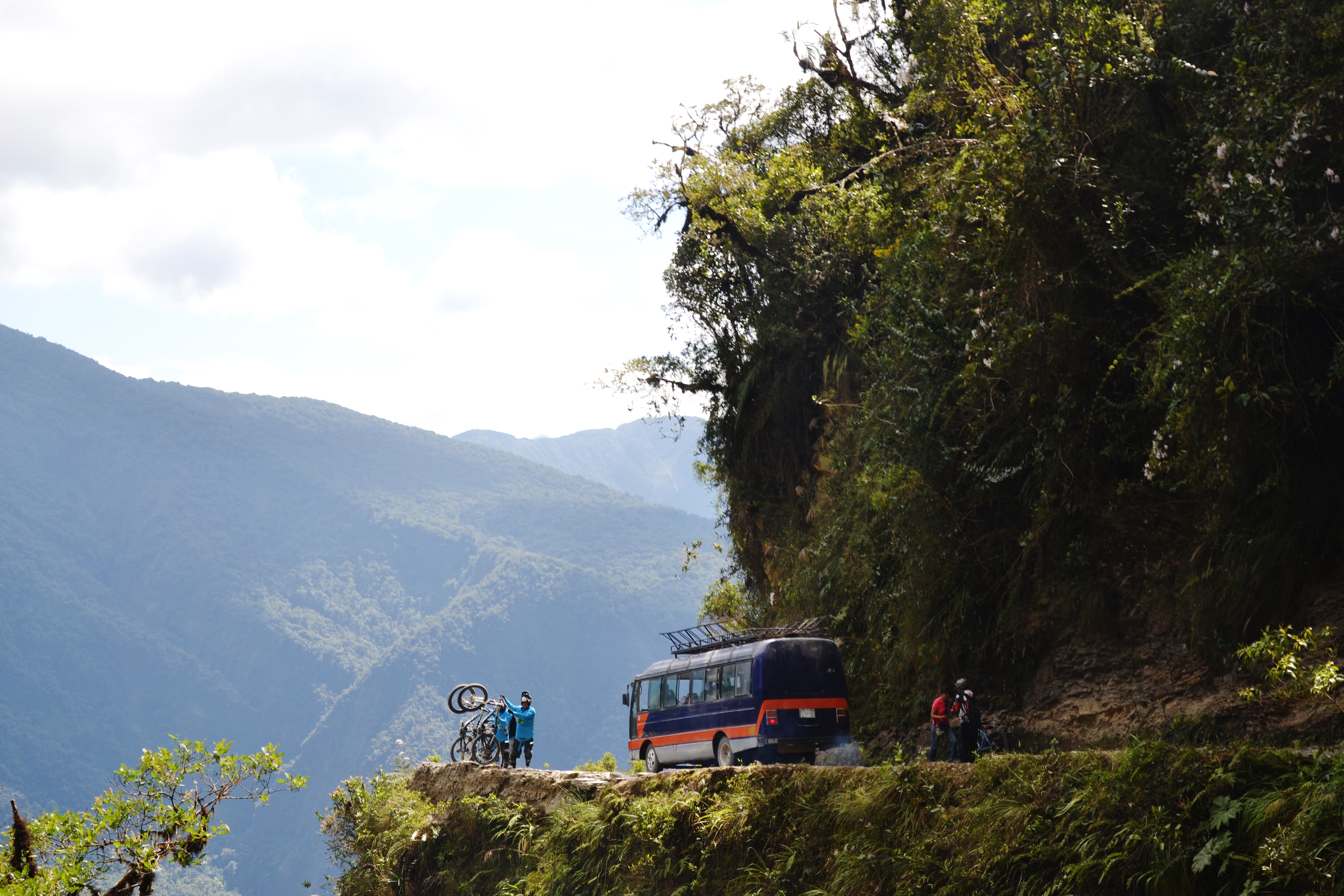
We arrive at an overlook that’s perfect for taking pictures. The views are spectacular: everything is surrounded by an imposing jungle landscape with waterfalls and rich vegetation. I sit on the edge, letting my legs hang over an abyss thousands of feet deep. I breathe deeply. We rest and then return to the task. Around a new curve, we find a plaque that reads A los Mártires de la Democracia, or “To the Martyrs of Democracy”. The phrase calls back to a terrible history: in 1944, in this exact spot, members of the Bolivian military dictatorship threw five opposition politicians down into the void.
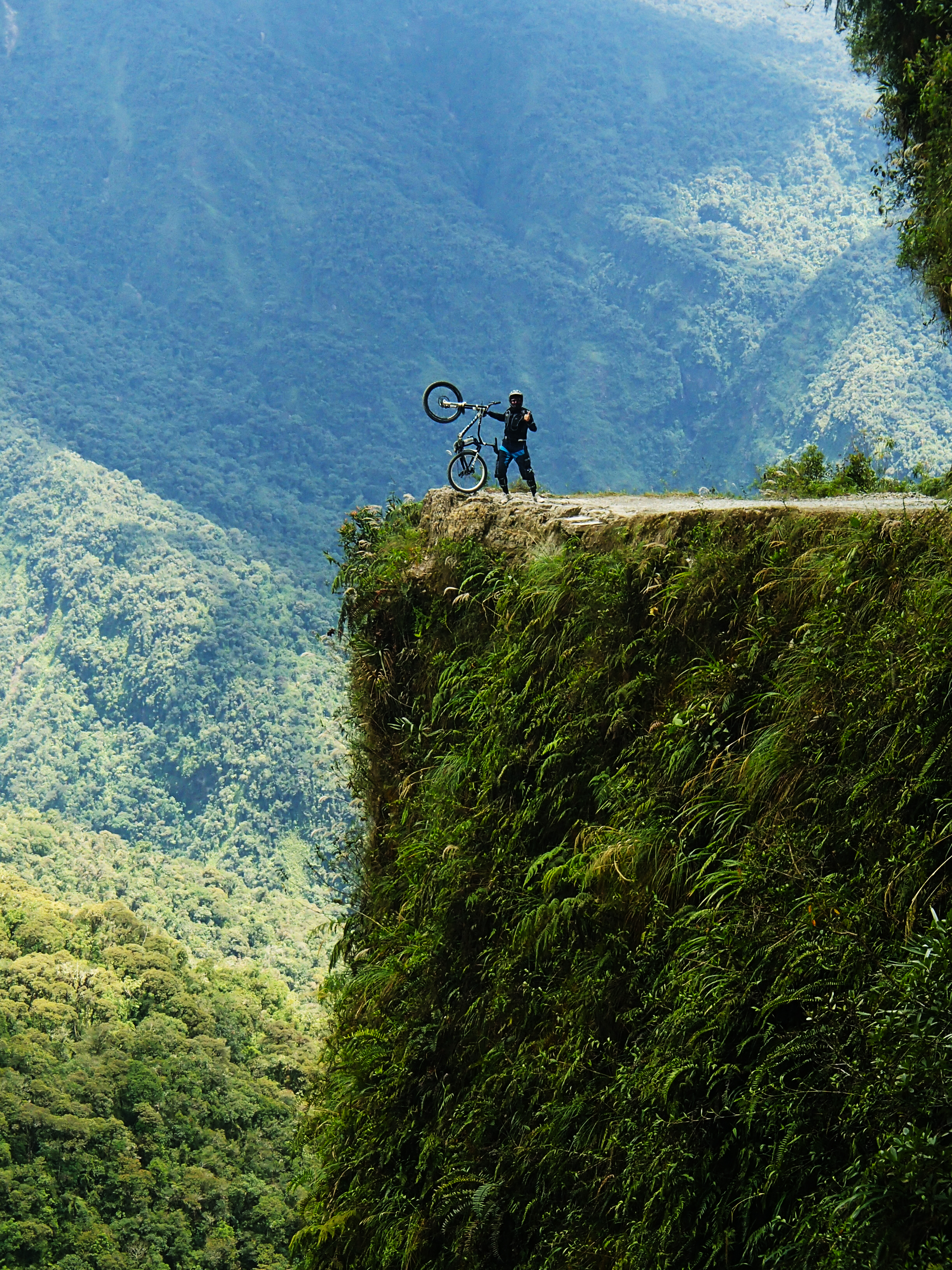
René announces that we’ve arrived at “The Curve of Death,” a 180-degree turn that’s not suitable for those with cardiac conditions. “One of the last deaths that occurred here was an Italian who took the curve very fast and slipped, but that happened a few years ago.” In 2011, a little farther down the road, a Japanese tourist fell off one of the cliffs when she tried to film her boyfriend with her cell phone. “She died instantly,” René says, the fierce wind visibly blowing across his face.
On our way down, three trucks of farmers from the area appear. I instinctively take refuge on the inside of the curve where it’s more sheltered, but a horn reminds me that I should be traveling on the left. The driver looks resigned—surely this happens to him every day.
12:00 PM
Three Bolivians, two men and a woman, appear on the road, closing it off with a thick rope. Their faces aren’t friendly. I had already been informed that in Bolivia it’s very common for communities to block roads as a form of protest. What they really want is for us to pay them 50 bolivianos (roughly $7 USD) per person, as a payment for crossing their land. The guides explain that they also want to take advantage of this tourist destination; we pay them immediately. Someone in our group makes an odd joke about their method of using the rope, but the surprise comes about 220 yards later when three new “customs officers” appear with a rope and spikes for the tires, in the event that someone uppity among us may have been considering avoiding payment.
“This is the golden rule: the bicycle will go where your eyes go, so please don’t look at the landscape. This isn’t a game.”
1:00 PM:
We stop again, this time to drink water and regroup. All of us are thirsty and exhausted, but there’s still another stretch to go. An old woman appears and offers us oranges, water, and coca leaf. I try a little, to soak up its characteristic bitter flavor. The guide buys a large bag for his father, explaining that this area produces the best in the country.
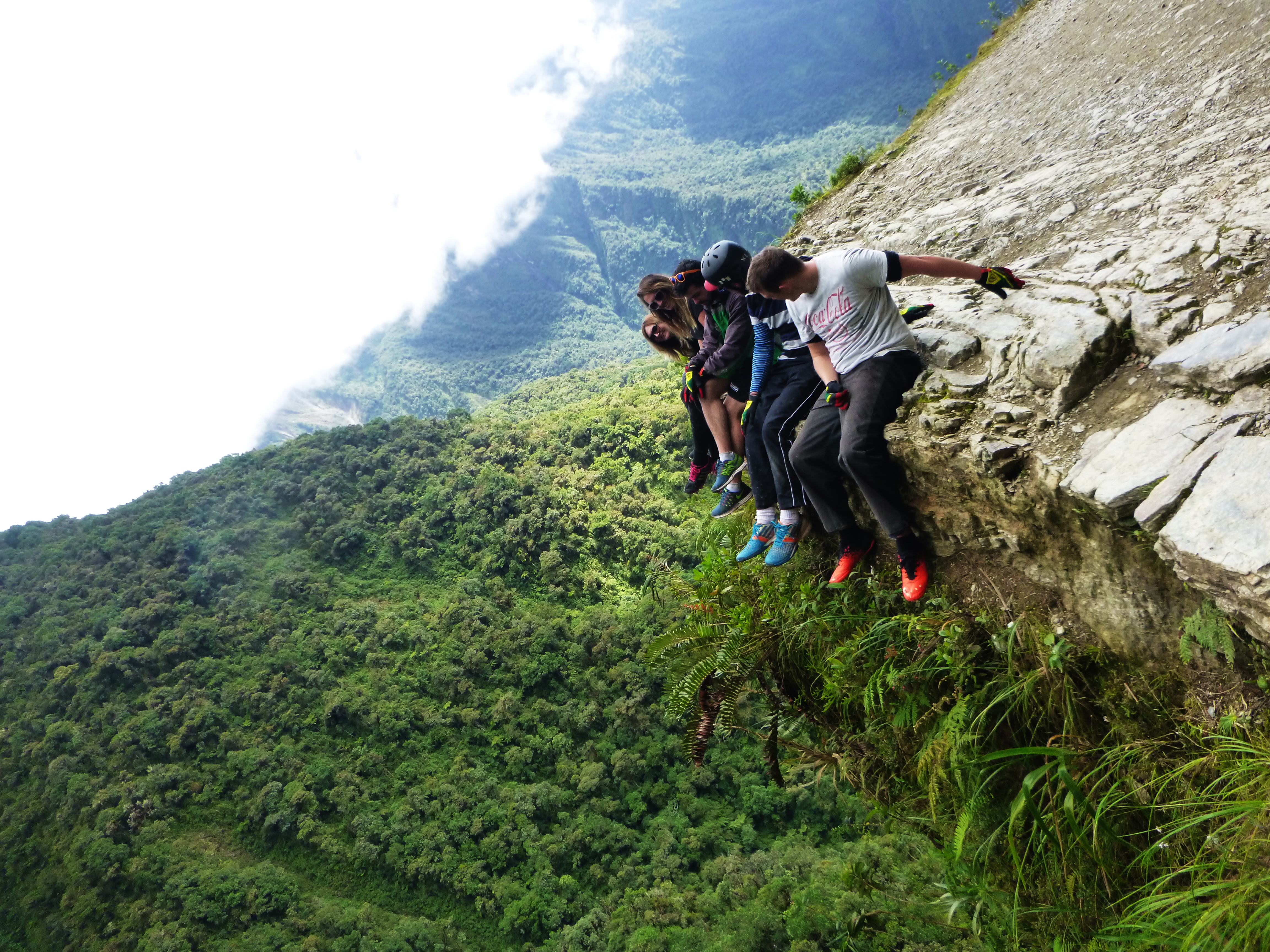
2:00 PM
We find ourselves in the final stretch. A new landscape appears, less jungle-like, with grassy areas and less pronounced slopes. The temperature rises noticeably; now we’re all riding in our t-shirts. It’s at this moment that Fernando leans into his bike and leaves everyone behind, including our guides. I try to catch up with him but I can’t—he’s going too fast. Goodbye, Olympic gold.
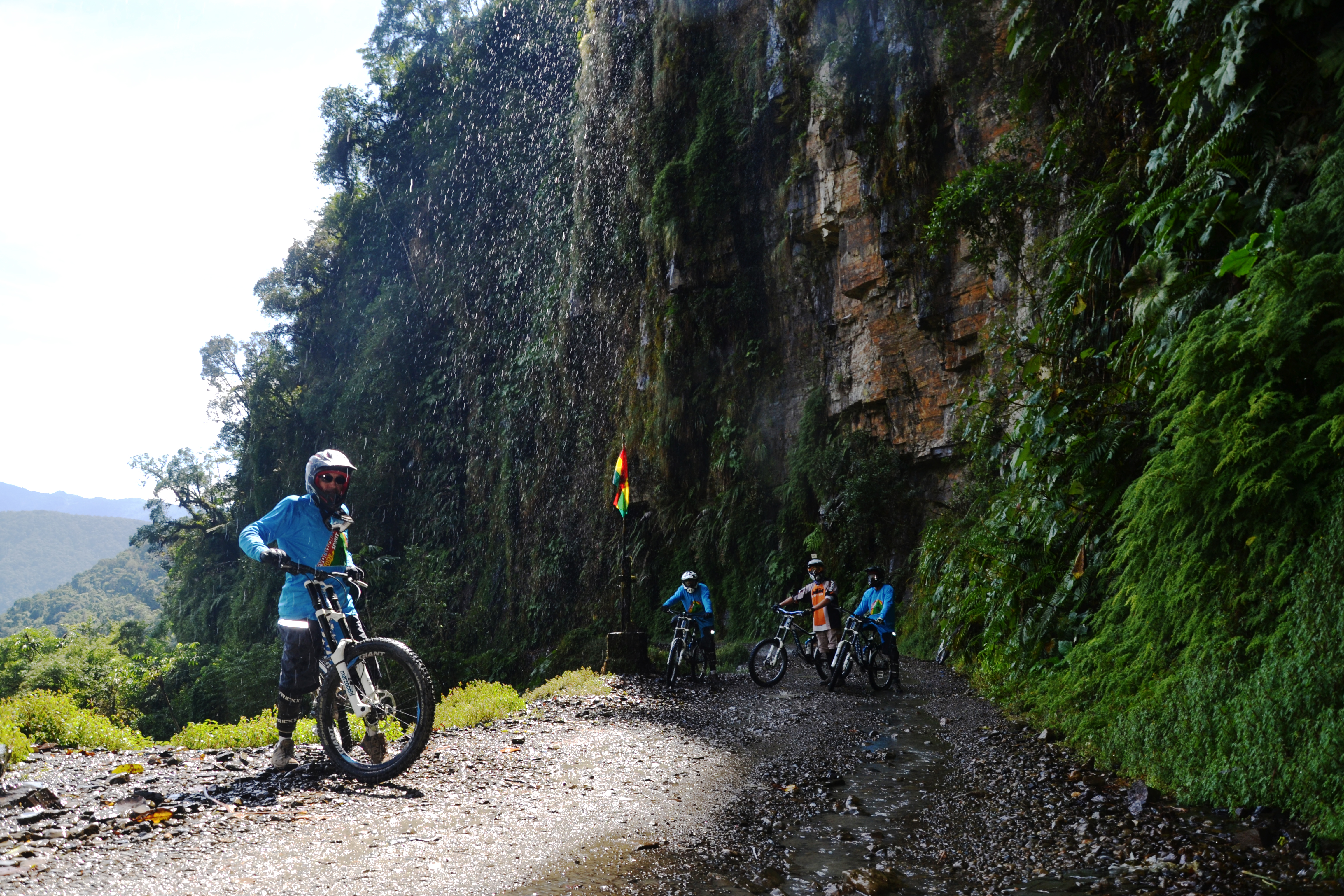
The descent continues, and I’m doing all I can to reach the end. Suddenly, I hear a very loud sound, like the shot of a shotgun. I look down and see that one of my tires has been punctured. Dammit. I stop and wait for the support car. Rafael passes me, then Shirley the Canadian, and finally the Brazilian couple, who go at a cruising speed in the country. In the interest of not wasting time, the driver gives me a spare bike.
I get on the new one, but it’s not going so well. I start pedaling hard, I sweat, my legs hurt, but I only think about getting back on track. There’s still one hour left to go until the end, the driver tells me, and I can’t be the last to finish.
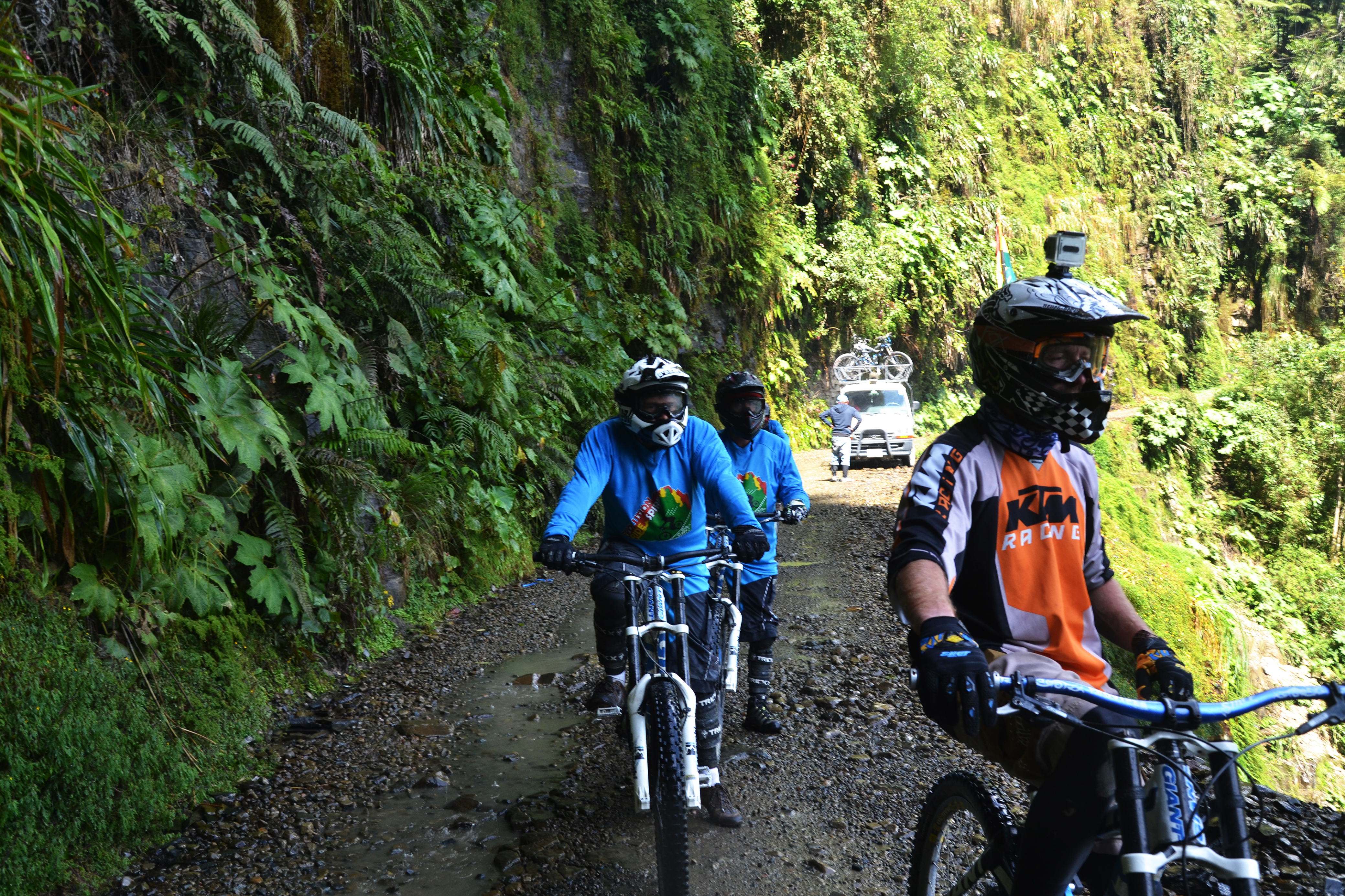
I speed up again and it doesn’t take me long to overtake the Brazilian couple, then Shirley, who seems more sure of herself now and is pedaling with more strength. The heat, the fatigue, and above all, the pain in my hands from keeping the handlebars steady, all make me want this adventure to come to an end soon.
Ahead of me are the two Argentinians, and I think it will be difficult to catch up with them. But fate is capricious and, when we’re on the last leg of the road, I see Rafael standing next to his bicycle. His tire has also been punctured. I wave, with a smile that hides a perverse satisfaction. I don’t get off my bike to help him because my chivalry in this competition has its limits.
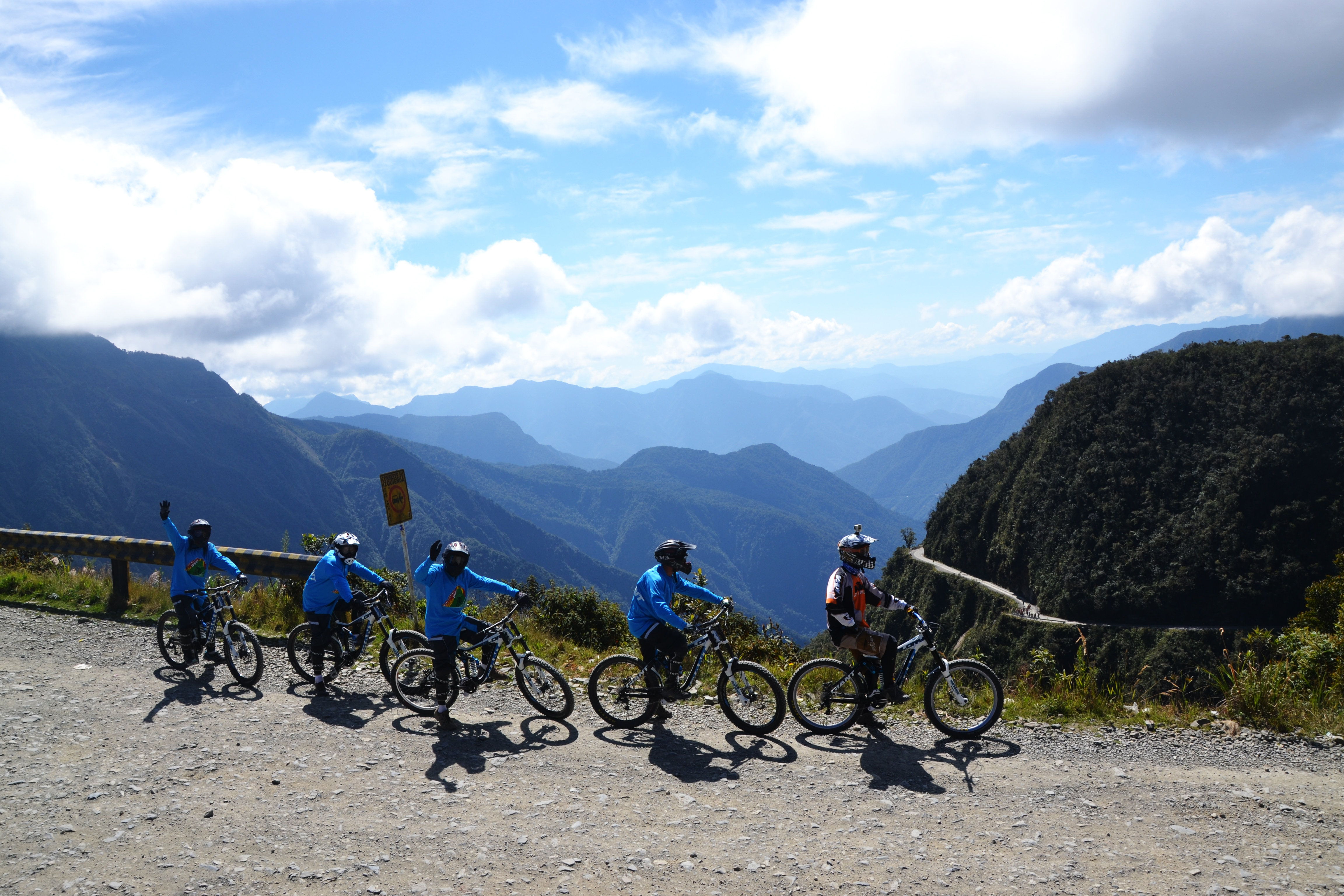
2:30 PM
After five hours of adrenaline-fueled downhill biking, the stone path ends and we reach a road very close to the town of Yolosa, at 3,871 feet. It’s the end of the adventure. I arrive in second place after Fernando. Soon, his compatriot arrives and, in the rear, Shirley and the Brazilian couple. We embrace each other and congratulate ourselves, relieved to have arrived safe and sound.
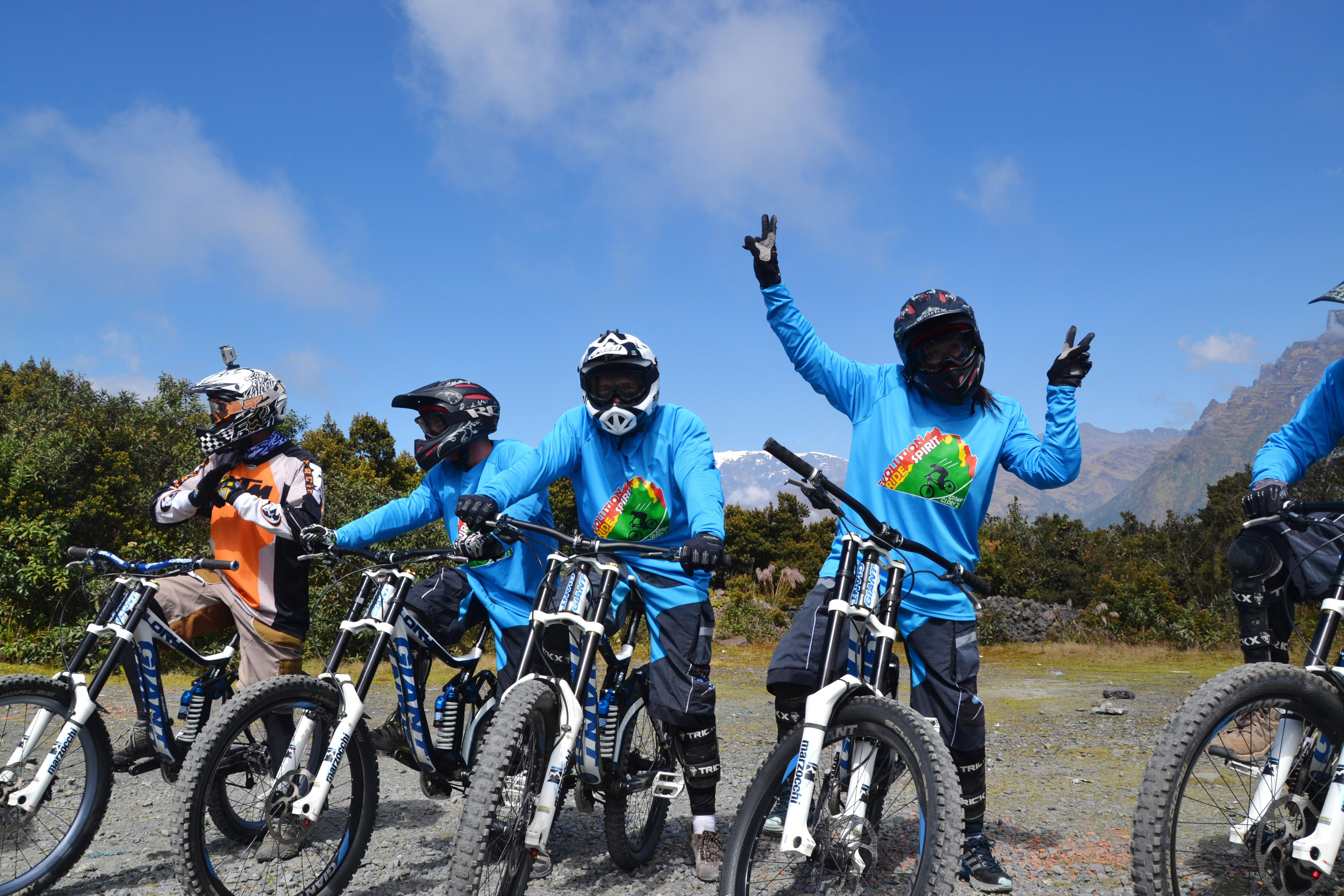
3:00 PM
The arrival party takes place in a hotel with a pool and lunch is served. We literally clean out the free buffet: not a single scrap of food is left behind. Then, we jump into the pool and toast with beer for having once again dodged the claws of death.
Sign up for our newsletter to get the best of VICE delivered to your inbox daily.
Follow Miguel on Instagram.
This article originally appeared on VICE CO.